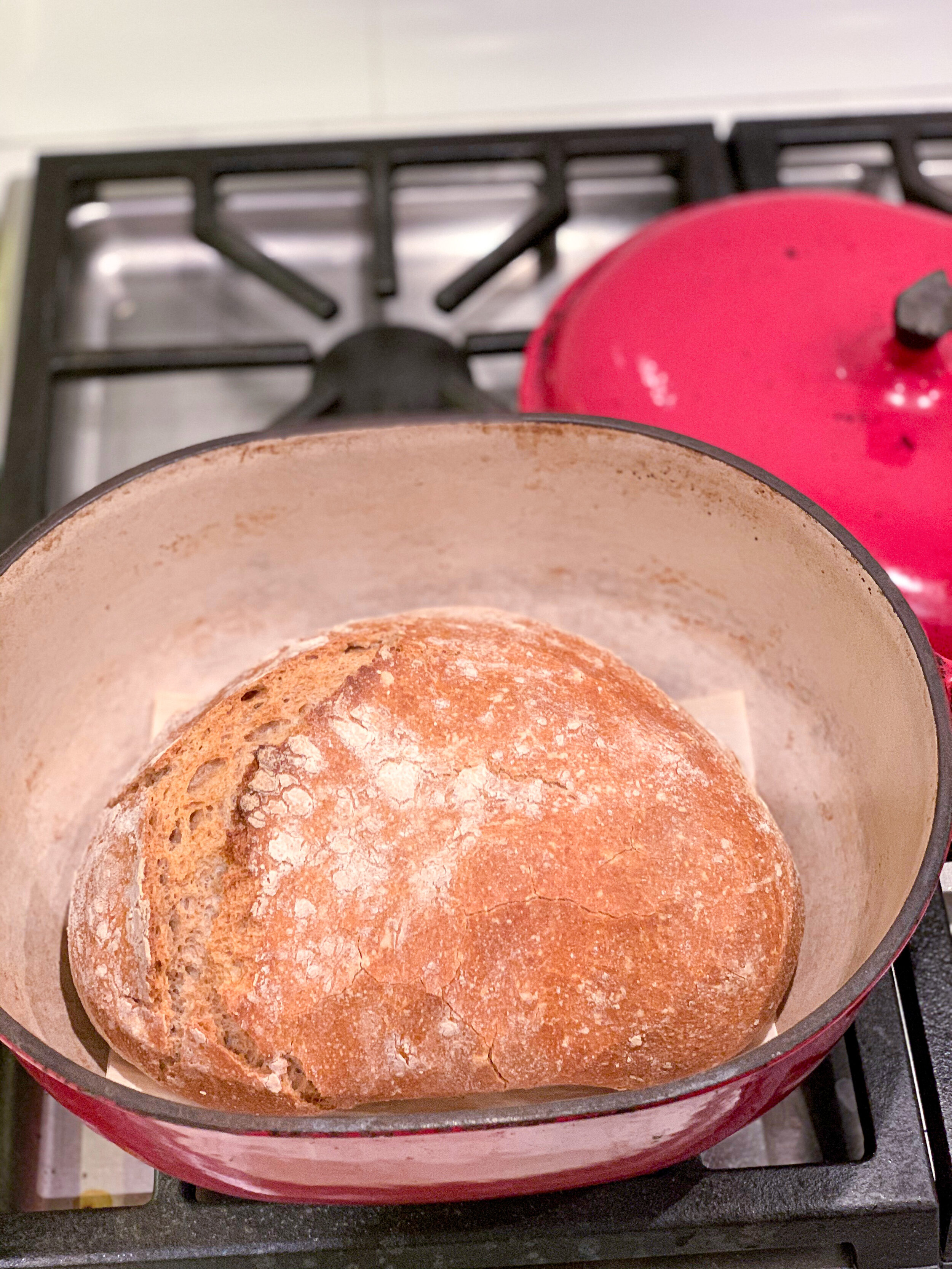Classic Sourdough Bread for the First Time Baker
Since the world is on lockdown, getting back to the basics of baking fresh bread has never felt more appropriate! A loaf of warm fresh bread from the local baker seems like such an indulgence when you can’t have it, so we had no choice but to learn how to do it ourselves! Bread has a mystical quality to it - but when you get down to it the basics are fairly simple. Flour, yeast and water and a little bit of chemical magic. The recipe below is a classic sourdough bread recipe - for a first time baker it is easy and the results are amazing. We switched the actual baking up a bit as we didn’t have a baking stone. Instead we used Aunt Zab’s Russian Dutch Oven, heating it first as the recipe calls for. We also substituted the bread flour (because we didn’t have any and there wasn’t any in the store) for 1/2 regular AP flour and 1/2 whole wheat flour. This is perfect for our avocado toast, a classic grill cheese sandwich or with a hearty stew.
Sourdough Bread
Using a sourdough starter is an ancient method of beginning to make a leavened bread. The starter consists of small amounts of some of the basic bread ingredients, such as flour, water, milk and, in this recipe, yogurt. This mixture is left out to attract wild yeasts from the air. The yeasts feed on the starch in the flour, resulting in the fermentation and souring of the mixture and creating a base to which additional ingredients can be added to make a dough. The starter may be left to develop for many days, depending on the desired degree of sourness.
Ingredients:
1 1⁄2 cups lukewarm water (100°F)
4 tsp. active dry yeast
1 Tbs. honey
6 cups bread flour, plus more as needed
1 Tbs. unsalted butter, melted
2 eggs
2 1⁄2 tsp. salt
2 Tbs. yellow cornmeal mixed with 2 Tbs.
bread flour
Directions:
In the bowl of an electric mixer fitted with the whisk attachment, combine the water, yeast, sourdough starter and honey. Beat on low speed just until smooth, about 1 minute. Cover with plastic wrap and let stand at room temperature until doubled in bulk, about 1 hour.
Switch to the flat beater and stir the starter mixture on low speed. Add 3 cups of the flour, the butter, eggs and salt. Increase the speed to medium-low and beat until smooth, about 1 minute. Add 2 more cups of the flour and beat for 2 minutes.
Switch to the dough hook. Reduce the speed to low and add the remaining flour, 1/2 cup at a time, beating until a very soft dough forms that pulls away from the sides of the bowl. Knead on low speed, adding flour 1 Tbs. at a time if the dough sticks, until smooth, springy and moist, about 6 minutes. Scrape down the sides of the bowl. Brush the bowl with a thin film of melted butter and turn the dough to coat it. Cover loosely with plastic wrap and let rise at room temperature until slightly more than doubled in bulk, 1 1/2 to 2 hours.
Line a baking sheet with parchment paper and sprinkle with the cornmeal mixture. Turn the dough out onto a lightly floured board. Divide the dough into 3 equal portions and shape each into a tight, round loaf. Place the loaves, seam side down and at least 4 inches apart, on the prepared sheet. Sprinkle the tops with flour and rub in. Cover loosely with a double layer of plastic wrap and let rise in the refrigerator for 8 to 12 hours.
Place a baking stone on the bottom oven rack and preheat the oven to 450°F.
Using a thin, sharp knife, make 3 gentle slashes across the top of each loaf. Place the baking sheet on the stone and bake for about 10 minutes, then reduce the heat to 400°F and bake until the loaves are golden brown, 20 to 25 minutes more. Let cool completely on wire racks before slicing and serving. Makes 3 small round loaves.





